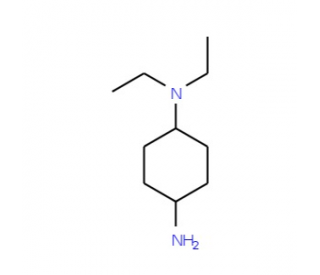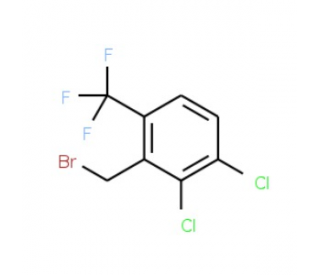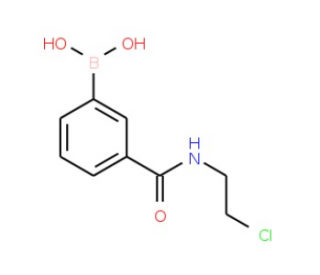详细说明
Purity
>90%, by SDS-PAGE under reducing conditions and visualized by silver stain
Endotoxin Level
<0.10 EU per 1 μg of the protein by the LAL method.
Activity
Measured by its binding ability in a functional ELISA. rhRAGE/Fc Chimera immobilized at 5 µg/mL (100 µL/well) on a goat anti-human IgG Fc antibody-coated plate (0.5 µg/well) can bind biotinylated advanced glycation endproducts of bovine serum albumin (AGE-BSA, Catalog # BT4127) with a linear range of 0.02-1 µg/mL.
Source
Mouse myeloma cell line, NS0-derived
Human RAGE
(Gln24 - Ala344)
Accession # Q15109IEGRMD Human IgG1
(Pro100 - Lys330)N-terminus C-terminus Accession #
N-terminal Sequence
AnalysisNo results obtained: Gln24 predicted
Structure / Form
Disulfide-linked homodimer
Predicted Molecular Mass
61 kDa (monomer)
SDS-PAGE
80-90 kDa, reducing conditions
1145-RG |
| |
Formulation Lyophilized from a 0.2 μm filtered solution in PBS. | ||
Reconstitution Reconstitute at 100 μg/mL in sterile PBS. | ||
Shipping The product is shipped at ambient temperature. Upon receipt, store it immediately at the temperature recommended below. | ||
Stability & Storage: Use a manual defrost freezer and avoid repeated freeze-thaw cycles.
|
Background: RAGE
Advanced glycation endproducts (AGE) are adducts formed by the non-enzymatic glycation or oxidation of macromolecules (1). AGE forms during aging and its formation is accelerated under pathophysiologic states such as diabetes, Alzheimer’s disease, renal failure and immune/inflammatory disorders. Receptor for Advanced Glycation Endoproducts (RAGE), named for its ability to bind AGE, is a multi-ligand receptor belonging the immunoglobulin (Ig) superfamily. Besides AGE, RAGE binds amyloid beta -peptide, S100/calgranulin family proteins, high mobility group B1 (HMGB1, also know as amphoterin) and leukocyte integrins (1, 2).
The human RAGE gene encodes a 404 amino acid residues (aa) type I transmembrane glycoprotein with a 22 aa signal peptide, a 320 aa extracellular domain containing an Ig-like V-type domain and two Ig-like Ce-type domains, a 21 aa transmembrane domain and a 41 aa cytoplasmic domain (3). The V-type domain and the cytoplasmic domain are important for ligand binding and for intracellular signaling, respectively. Two alternative splice variants, lacking the V-type domain or the cytoplasmic tail, are known (1, 4). RAGE is highly expressed in the embryonic central nervous system (5). In adult tissues, RAGE is expressed at low levels in multiple tissues including endothelial and smooth muscle cells, mononuclear phagocytes, pericytes, microglia, neurons, cardiac myocytes and hepatocytes (6). The expression of RAGE is upregulated upon ligand interaction. Depending on the cellular context and interacting ligand, RAGE activation can trigger differential signaling pathways that affect divergent pathways of gene expression (1, 7). RAGE activation modulates varied essential cellular responses (including inflammation, immunity, proliferation, cellular adhesion and migration) that contribute to cellular dysfunction associated with chronic diseases such as diabetes, cancer, amyloidoses and immune or inflammatory disorders (1).
References:
Schmidt, A. et al. (2001) J. Clin. Invest. 108:949.
Chavakis, T. et al. (2003) J. Exp. Med. 198:507.
Neeper, M. et al. (1992) J. Biol. Chem. 267:14998.
Yonekura, H. et al. (2003) Biochem. J. 370:1097.
Hori, O. et al. (1995) J. Biol. Chem. 270:25752.
Brett, J. et al. (1993) Am. J. Pathol. 143:1699.
Valencia, J.V. et al. (2004) Diabetes 53:743.
Long Name:
Receptor for Advanced Glycation End Products
Entrez Gene IDs:
177 (Human); 11596 (Mouse); 81722 (Rat)
Alternate Names:
AGER; EC 2.7.11.22; MOK protein kinase; MOKMAPK/MAK/MRK overlapping kinase; RAGE; RAGE-1; RAGE1renal cell carcinoma antigen (MOK protein kinase); Renal tumor antigen 1; renal tumor antigen










 粤公网安备44196802000105号
粤公网安备44196802000105号